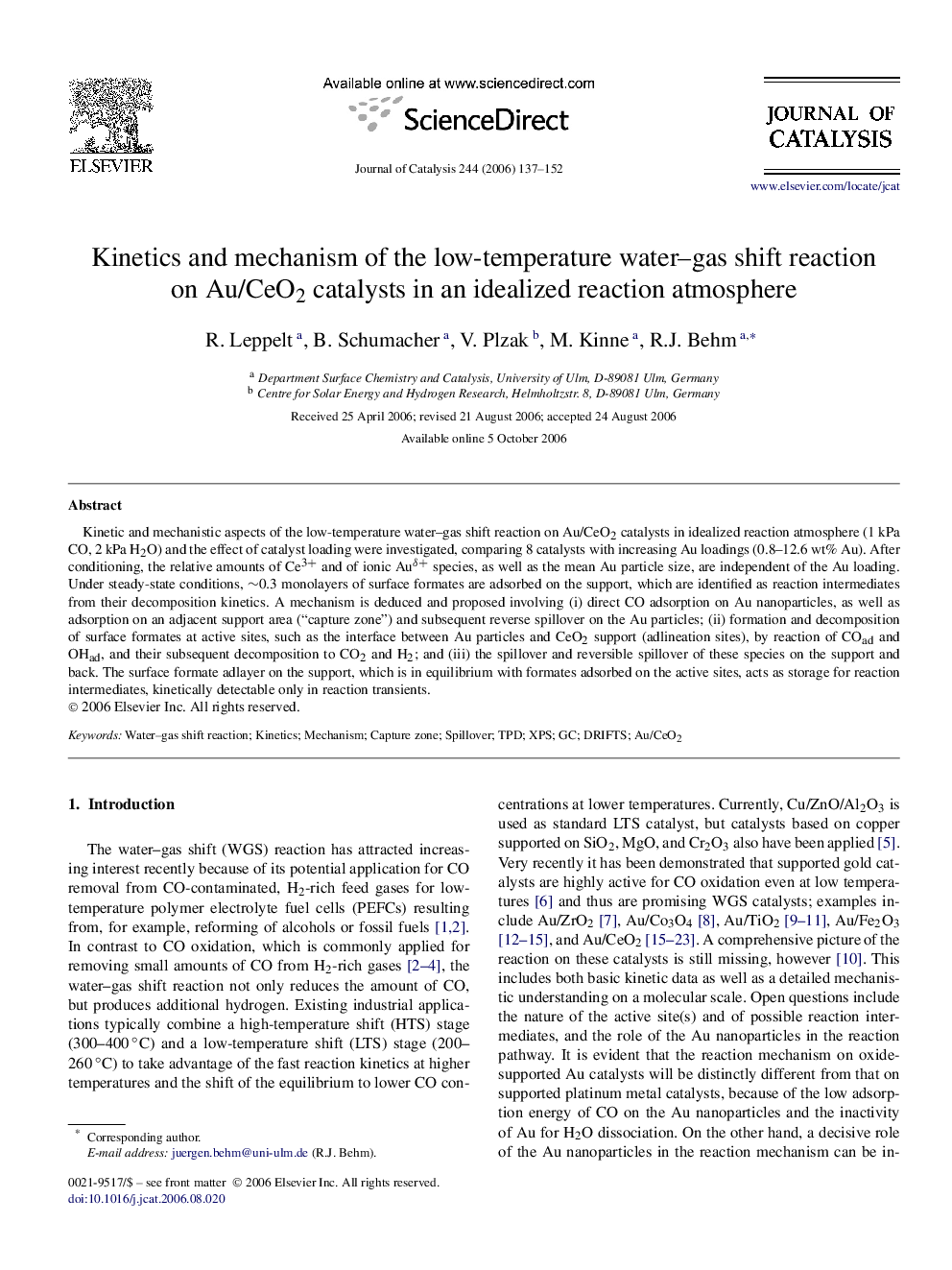| Article ID | Journal | Published Year | Pages | File Type |
|---|---|---|---|---|
| 62954 | Journal of Catalysis | 2006 | 16 Pages |
Kinetic and mechanistic aspects of the low-temperature water–gas shift reaction on Au/CeO2 catalysts in idealized reaction atmosphere (1 kPa CO, 2 kPa H2O) and the effect of catalyst loading were investigated, comparing 8 catalysts with increasing Au loadings (0.8–12.6 wt% Au). After conditioning, the relative amounts of Ce3+ and of ionic Auδ+ species, as well as the mean Au particle size, are independent of the Au loading. Under steady-state conditions, ∼0.3 monolayers of surface formates are adsorbed on the support, which are identified as reaction intermediates from their decomposition kinetics. A mechanism is deduced and proposed involving (i) direct CO adsorption on Au nanoparticles, as well as adsorption on an adjacent support area (“capture zone”) and subsequent reverse spillover on the Au particles; (ii) formation and decomposition of surface formates at active sites, such as the interface between Au particles and CeO2 support (adlineation sites), by reaction of COad and OHad, and their subsequent decomposition to CO2 and H2; and (iii) the spillover and reversible spillover of these species on the support and back. The surface formate adlayer on the support, which is in equilibrium with formates adsorbed on the active sites, acts as storage for reaction intermediates, kinetically detectable only in reaction transients.
